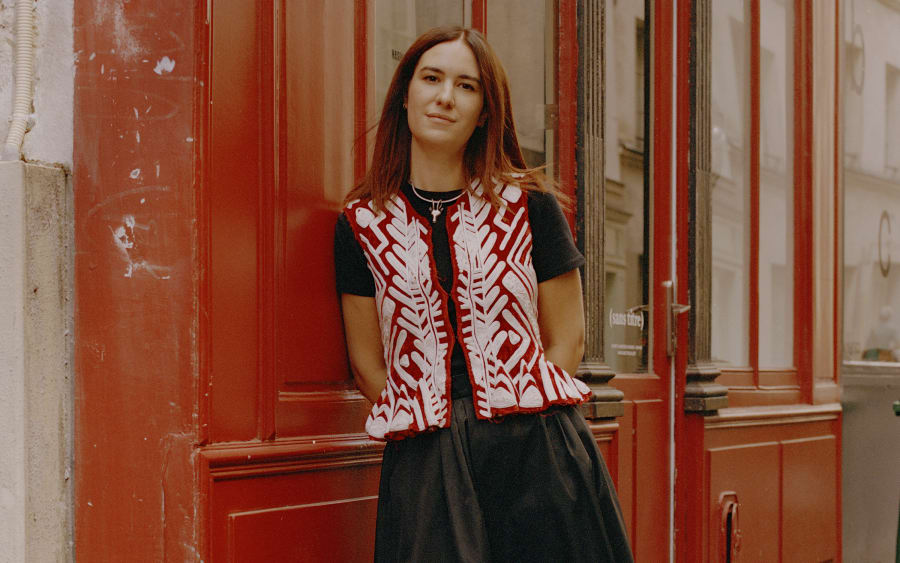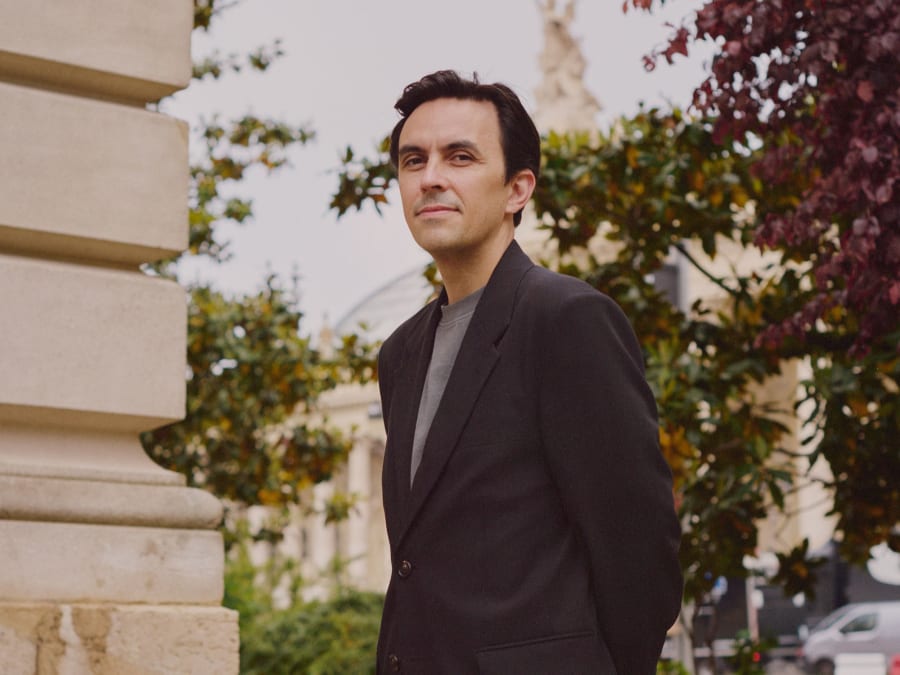Julius von Bismarck has always been fascinated by monuments. ‘I whipped the Statue of Liberty,’ the artist recalls from his Berlin studio, referencing his 2011–12 series ‘Punishment’. For that project he traveled to remote landscapes. Later, he set his sights on whipping cultural landmarks and, in the case of the New York icon, was arrested for doing so.
For a more recent monument-inspired creation, The Elephant in the Room (2023–25), which will be shown at the Petit Palais as part of Art Basel Paris’s 2025 public program, von Bismarck took a more playful, seemingly innocent approach. Inspired by a push-puppet toy the artist had as a child, the work features a pair of kinetic sculptures that continually collapse and reassemble at different speeds. Controlled by motors, winches, and a computer program, their cyclical motions echo, in the artist’s words, ‘the fragility of monuments that seem permanent,’ a topic the artist has been thinking about since the wave of statue removals sparked by the murder of George Floyd in 2020. Even before that, he had been struck by the Taliban’s destruction of the Bamiyan Buddhas in Afghanistan in 2001 and the televised toppling of Saddam Hussein’s statue in Baghdad in 2003.
The first figure in The Elephant in the Room is a taxidermy giraffe. ‘Is a giraffe a monument?’ von Bismarck asks, explaining his interest in the idea of nature as a colonial invention that separates humans from the rest of Earthly creation. ‘Yes it is.’ Through this sculpture, von Bismarck highlights that while giraffe toys and animals in zoos may seem docile and decorative, they in fact demonstrate humans exerting colonial power over other beings. ‘I’m trying to go back into the visitors’ memory of childhood and make them more aware that what they experienced as innocent might have had a big effect on how they perceive the world today.’
Next to the giraffe stands a more traditional monument – a reduced replica of a statue of the German statesman Otto von Bismarck. As is apparent from their shared surname, Otto – the first chancellor of the newly unified Germany from 1871 to 1890 – is the artist’s ancestor, and The Elephant in the Room is the first time he has addressed his family history. The work debuted in ‘When Platitudes Become Form’, von Bismarck’s exhibition held at the Berlinische Galerie in the German capital in 2023, and explored colonization’s role in shaping nature – ‘From a German perspective, there was no way around that name,’ the artist says. After his death, Otto was cast as ‘a national hero, as a monument, and as a name giver for streets,’ von Bismarck continues. Now many believe in – and have even taken action toward – toppling the ubiquitous statues of the controversial figure due to his role in expanding the German Empire.
Yet even when monuments are removed, there is always the chance they will be reinstated, just like von Bismarck’s constantly resurrecting push puppets. ‘When you look at the political events of the past couple of years, it’s clear that society returns to things we thought were resolved long ago,’ he says.
The Elephant in the Room had particular significance when shown in Berlin. Still, von Bismarck is interested to see how the work will resonate in a different context at Art Basel Paris. ‘Putting a monument within thousands of other monuments in the very baroque background [of the Petit Palais] is very different from putting it in a modernist museum in Berlin,’ he says, describing the Parisian venue as ‘a monument for a certain time, type of state, and phase in architecture and art.’ The fact that global visitors will attend the fair is also exciting for the artist. ‘The matters I’m talking about are international, not just German.’
In the French capital, The Elephant in the Room will be shown alongside two other works: a wall piece from von Bismarck’s ‘OOOSB’ series (2024–25), in which he presses plants and taxidermy animals into inexpensive wood to create images that reference ‘dreams of mine…and animal fables,’ and Grenzen der Intelligenzen (2024), a hypnotic video of insects endlessly circling a fluorescent light. ‘It’s a small exhibition of different works that show my overall interest in human projection onto animals, and how we use them as a tool to construct our own reality,’ von Bismarck says.
The Elephant in the Room is part of an ongoing series of push puppet-inspired sculptures that ‘use the same technology and overall concept, but have very different meanings.’ Works to date include Das Reh (2024), a life-size fawn-shaped sculpture draped with the skin of a roe deer, and Zwei Wölfinnen (2024), which brings together two depictions of she-wolves. One is a taxidermy animal, the other is based on the classical bronze of the she-wolf that supposedly mothered Romulus and Remus, the mythological founders of Rome – an example of the kind of human projection von Bismarck refers to. ‘[Are these stories] something humans need [to shape our] cultural understanding of the world? Or did they really happen? It’s important to look at them more closely.’
Emily May is a British, Berlin-based writer specializing in dance and performance.
Julius von Bismarck’s Petit Palais presentation runs October 21–26, and is presented by Sies + Höke and The Ranch. Discover more about the Art Basel Paris 2025 Public program here.
Miu Miu is the Public Program Official Partner.
Students from the École du Louvre are available every day from October 21 to 26, 2pm to 17:30pm, to provide visitors with information.
Caption for header image: Installation view of Julius von Bismarck’s exhibition When Platitudes Become Form at Berlinische Galerie, Berlin. Photograph by Roman März. Courtesy of the artist and Berlinische Galerie.
Published on October 2, 2025.


